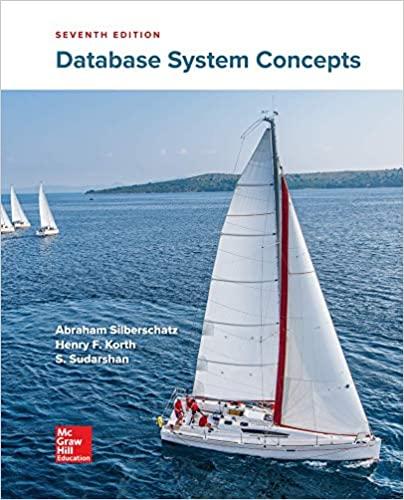An E-R diagram usually models the state of an enterprise at a point in time. Suppose we
Question:
An E-R diagram usually models the state of an enterprise at a point in time. Suppose we wish to track temporal changes, that is, changes to data over time. For example, Zhang may have been a student between September 2015 and May 2019, while Shankar may have had instructor Einstein as advisor from May 2018 to December 2018, and again from June 2019 to January 2020. Similarly, attribute values of an entity or relationship, such as title and credits of course, salary, or even name of instructor, and tot cred of student, can change over time.
One way to model temporal changes is as follows: We define a new data type called valid time, which is a time interval, or a set of time intervals. We then
associate a valid time attribute with each entity and relationship, recording the time periods during which the entity or relationship is valid. The end time of an interval can be infinity; for example, if Shankar became a student in September 2018, and is still a student, we can represent the end time of the valid time interval as infinity for the Shankar entity. Similarly, we model attributes that can change over time as a set of values, each with its own valid time.
a. Draw an E-R diagram with the student and instructor entities, and the advisor relationship, with the above extensions to track temporal changes.
b. Convert the E-R diagram discussed above into a set of relations. It should be clear that the set of relations generated is rather complex, leading to difficulties in tasks such as writing queries in SQL. An alternative approach, which is used more widely, is to ignore temporal changes when designing the E-R model (in particular, temporal changes to attribute values), and to modify the relations generated from the E-R model to track temporal changes.
Step by Step Answer:

Database System Concepts
ISBN: 9780078022159
7th Edition
Authors: Abraham Silberschatz, Henry F. Korth, S. Sudarshan





